Updated for 2017
Fairy gardens are a cute and decorative way to add a touch of whimsy to any home or garden. They are a fun way to let your imagination and creativity run wild, while creating something beautiful at the same time. A fairy garden can be in a designated area in your yard, or can even be done in a container planting of any size, either indoors or outdoors. Remember that you should include such items as ground cover plantings, flowers, herbs, possibly a water source, and small scale furniture or statues as decoration. Lay out the fairy garden the same way that you might approach landscaping a yard. Use plants with varying heights, and plan around any “buildings” that might be included in your design. Here are some helpful tips for planning out a fairy garden.
Lay The Groundwork-Literally!
A great place to start is laying the groundwork, or in this case, ground cover. If planting outdoors, clear a spot to designate where you would like your fairy garden to be. In the area where you would want “grass”, plant some live moss such as frog moss or hair cap moss. This will look like a lush grassy area or carpet for the fairies. No need to plant ground cover where there will be other plants or tiny homes. Another good planting that will provide ground cover is the miniature Duck Foot English Ivy. If using a container for indoors or outside, simply prepare the planter with some good quality potting soil before beginning your design.
Books to Help You Get Started
These books can give you helpful ideas for any type of fairy garden, whether it is in a pot or in your yard. Additionally, there are hints on how to make your own houses for your fairies if you wish to make them by hand.
Gardening in Miniature Miniature Gardens
Miniature Gardens Fairy Gardening
Fairy Gardening Fairy Gardening 101
Fairy Gardening 101 Fairy House
Fairy House Fairy Garden Handbook
Fairy Garden Handbook Fairy Houses
Fairy Houses Fairy Gardens
Fairy Gardens
Other Plants And Flowers
Decide where you would like to include other plants and flowers in your garden. If you plan on placing a “house” or “cottage” in the garden, work around that to decide where to place miniature trees and other small flowering plants. For example, a miniature Hen and Chicks succulent would make a terrific landscaping shrub in the front of the house, and a tiny Rosemary plant makes a perfect “tree”, perhaps planted on the side of the house. Incorporate tiny flowers such as the miniature Daisy and miniature Heron’s Bill for colorful, fairy sized blooms.
Landscape Materials
Just like regular sized people, tiny fairies enjoy such landscaping as water sources, rocks, wooden bridges, etc. When planning these elements in the fairy garden, it is best to stick to natural building materials such as wood and rock. Place a tiny stone walkway through your garden, or perhaps add a tiny bridge make from small twigs. Natural stones and other natural crafting materials can usually be purchased very inexpensively in the craft section of a dollar type store. You can even add a miniature pond by digging a small hole in the garden and placing some small container inside to where it is level with the ground layer. This could be a tiny storage container (which could be plastic because it won’t really show), small clay pot, etc. Maybe add a few colored glass gems to the bottom and fill with water.
Furnishings
Browse the dollhouse and miniatures section of your local craft and hobby stores to find a small cottage or house for your tiny visitors. Factory Direct Craft offers some very cute styles of fairy homes in their Fairy Garden Miniatures section Other cute accessories that are fairy sized might include a small rocking chair, a teeny birdhouse hung on a shepherd’s hook, and tiny little animals such as foxes or deer. You may also want to add a tiny decorative fence and other yard decorations to the fairy garden. Also, look for tiny fairy miniatures or garden gnomes who will take up residence in the new garden.
Miniature Garden Accessories Fairy Garden Cottage
Fairy Garden Cottage Indoor Gardening Tools
Indoor Gardening Tools Miniature Pot Sticker
Miniature Pot Sticker Mini Bridge, Rustic
Mini Bridge, Rustic Peapod Hammock
Peapod Hammock Garden Fairy With Gems
Garden Fairy With Gems Fairy Garden Sisters
Fairy Garden Sisters Mini Dragon Playing w Ladybug
Mini Dragon Playing w Ladybug Fairy Garden Trellis
Fairy Garden Trellis Cardinal Birdbath
Cardinal Birdbath Fairy Garden House
Fairy Garden House
Extra Tips
When planning the layout of your fairy garden, just think in terms of how you would landscape a real yard. Also, think of where the people and animals, pond, fence, etc. would be in an actual landscaped yard. Look through some magazines about landscaping if you’re running low on inspiration. Remember that fairies like places to hide, enjoy wildlife, love butterflies, and like to be near water.
Another great way to decide where to place decorative items would be to ask a child. Not only will children love helping you to plan a fairy garden, they will offer great suggestions because they see the world through the eyes of a child and would instantly know where the fairies might live, hide, etc. This is a fun project that can be an extension of the main yard, or an attraction all on its own in a container planting either outdoors or inside the home.
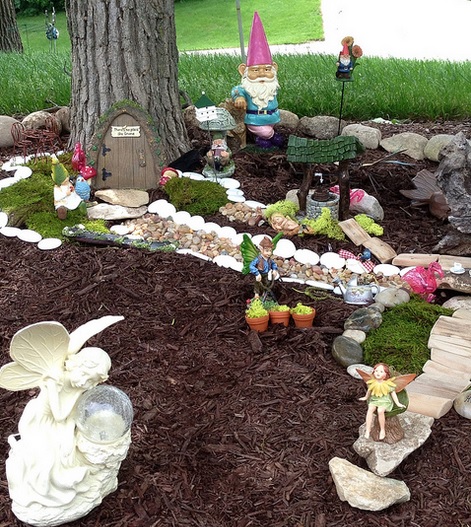
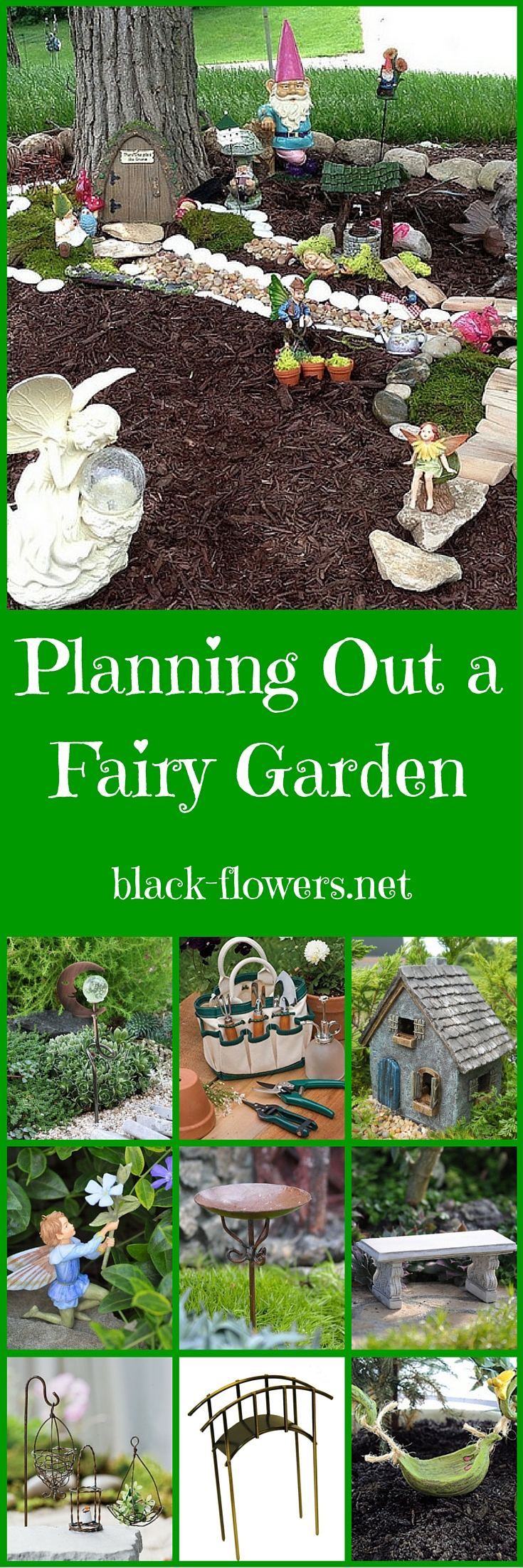


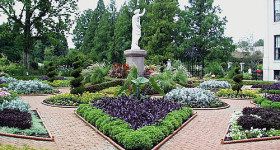
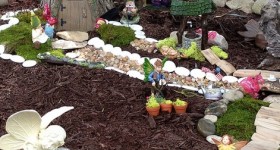
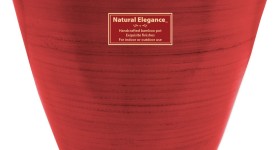
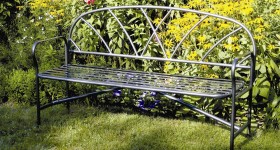
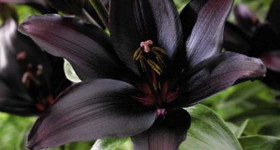



I have wanted to do this for so long. I live in New England. I am afraid that when we have a heavy rain, it will be destroyed. Any suggestions?
Put it in a partially protected area under a tree or rig a netting over it to protect it.